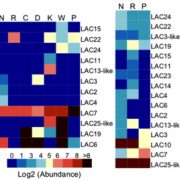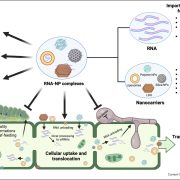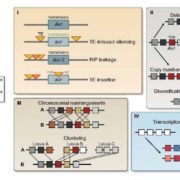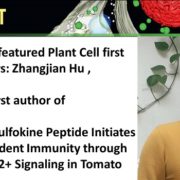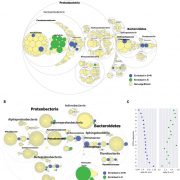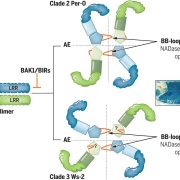Drastic genome reduction in an herbivore’s pectinolytic symbiont
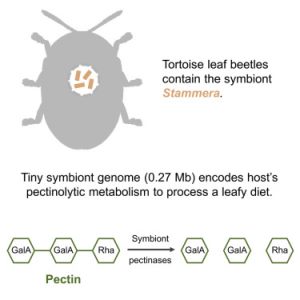 Cell. In a very interesting report, Salem et al., showed evidence of an alternative mechanism supporting how the degradation of pectin, a very hard to metabolize component of the cell wall, has directed the evolution of herbivory in insects and arthropods. Recent reports have indicated that horizontally acquired genes that code for essential metabolites or enzymes, have directed diversification in several insect orders. In addition, other reports suggested that symbioses could be another way to endue animals with adaptations, facilitating their diversification into a broad range of environments. Analysing a leaf beetle, they found that its pectin-degrading phenotype was dependent on an extracellular bacterium, in specialized organs connected to the foregut. Surprisingly, this symbiont contained the smallest genome of any organism not subsisting within a host cell and despite that, a complete and functional metabolism for degradation of homogalacturonan and rhamnogalacturonan I, the most abundant pectin polysaccharides. Furthermore, eliminating this bacterium caused less pectin degradation capacity and reduced survival in the host indicating this symbiosis as a successful strategy for adaptation. (Summary by Maria Julissa Ek-Ramos) Cell. 10.1016/j.cell.2017.10.029
Cell. In a very interesting report, Salem et al., showed evidence of an alternative mechanism supporting how the degradation of pectin, a very hard to metabolize component of the cell wall, has directed the evolution of herbivory in insects and arthropods. Recent reports have indicated that horizontally acquired genes that code for essential metabolites or enzymes, have directed diversification in several insect orders. In addition, other reports suggested that symbioses could be another way to endue animals with adaptations, facilitating their diversification into a broad range of environments. Analysing a leaf beetle, they found that its pectin-degrading phenotype was dependent on an extracellular bacterium, in specialized organs connected to the foregut. Surprisingly, this symbiont contained the smallest genome of any organism not subsisting within a host cell and despite that, a complete and functional metabolism for degradation of homogalacturonan and rhamnogalacturonan I, the most abundant pectin polysaccharides. Furthermore, eliminating this bacterium caused less pectin degradation capacity and reduced survival in the host indicating this symbiosis as a successful strategy for adaptation. (Summary by Maria Julissa Ek-Ramos) Cell. 10.1016/j.cell.2017.10.029


